Power supply restored, but Cyclone Amphan has wiped off all livelihoods in the Sundarbans
Almost a month after the Cyclone Amphan made a landfall in the Sundarbans, power supply is restored in Sagar Island. But, no source of income as both farmlands and fishing ponds are destroyed


Photo: Ganesh Chandra Das
It is going to be a month since the Super Cyclone Amphan made a landfall on May 20 in the Sundarbans, near West Bengal and Bangladesh coasts, as a very severe cyclonic storm causing widespread damages to houses, infrastructure, agriculture land, standing crops, embankments and fishing ponds. All the 42 villages of the Sagar Island, the largest habited island in the Indian Sundarbans delta, were battered by the cyclone.
“Power supply has been restored in almost all the 42 villages except two or three where work is going on. But, people who lost their kaccha houses are still living under tarpaulin roofs as the strong winds of the cyclone blew away the roofs,” Ganesh Chandra Das, coordinator of Sabuj Sangh (Green Group), a local non-profit in Sagar Island, told Gaon Connection. Along with the team mates, he is busy carrying out relief works and running community kitchen in affected villages.
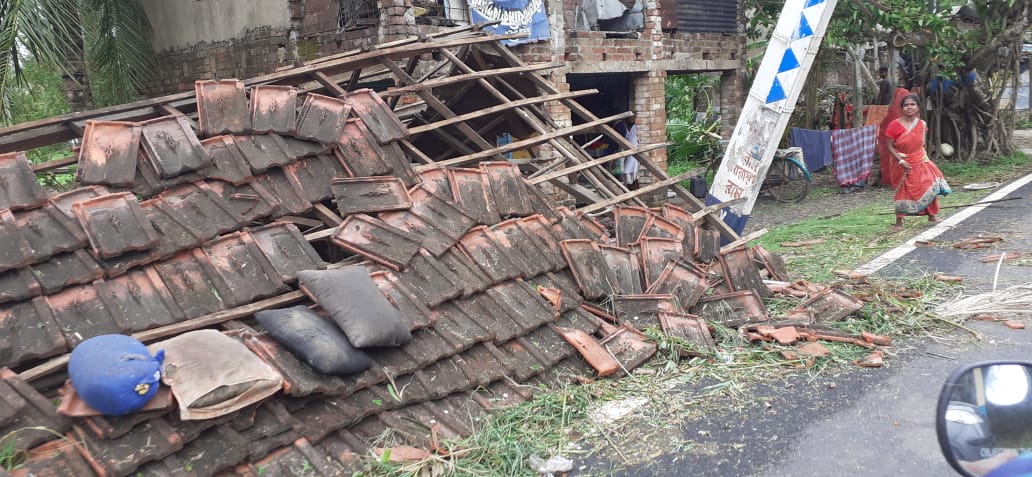
The extent of devastation is huge, as almost 60 per cent houses in Sagar Island were affected by the cyclone, he said. “A number of handpumps have become defunct [throwing up saline water] and sealed by the authorities, so women have to walk long distances to fetch drinking water. Betel vine cultivation is completely destroyed and fishes in all fishing ponds are dead. Villagers are now trying to clean their ponds, which are full of muck and debris,” Das added.
Organisations working on disaster relief and reconstruction are trying to make safe water accessible to cyclone-affected communities. “Because of storm surge, induced by the Cyclone Amphan, groundwater in coastal areas of West Bengal has gone saline. We have installed over 130 low-maintenance community water filters, based on localised technology, to meet the water needs of the people,” Yezdani Rahman, chief of program, SEEDS India told Gaon Connection.
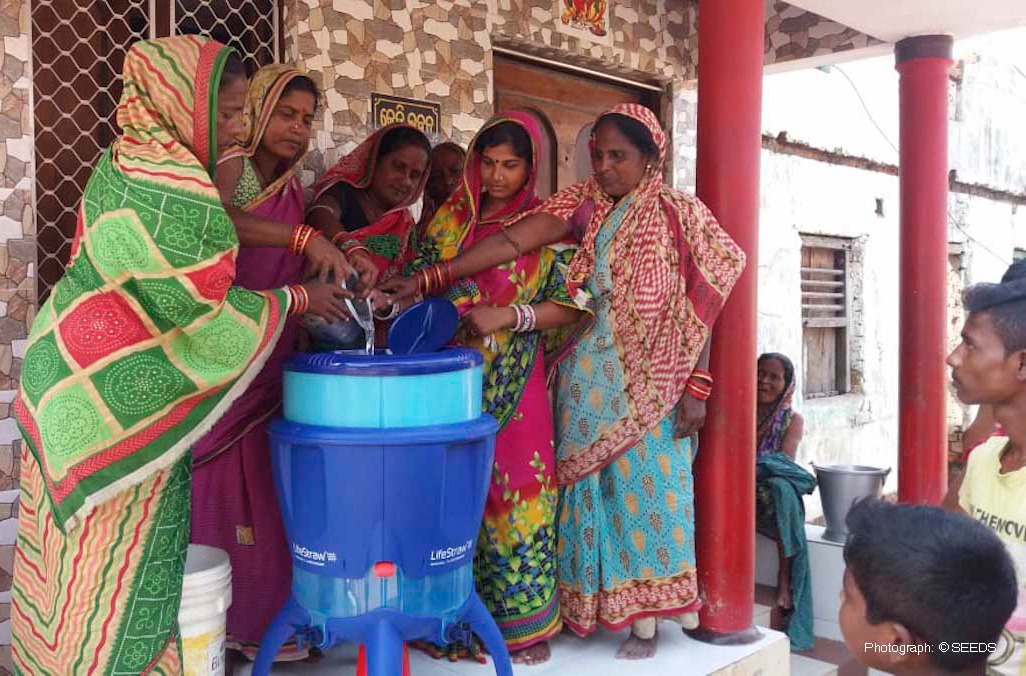
“We also have a mobile health camp — a mobile bus fitted with various medical facilities — moving around in three Amphan-affected districts of the state to meet healthcare needs of the people,” he added.
Meanwhile, embankments, which protect the islands of Sundarbans from the fury of the sea, have breached at several points and seawater ingression up to 2-kilometre continues. This has destroyed agriculture land on which no crops can grow for a couple of years. Authorities are trying to fix the embankments, but it is going to take time, inform the villagers.
Last August, Gaon Connection had travelled to Sagar Island and reported on how embankments broken during the Cyclone Aila in 2009 had still not been repaired a decade later. The entire Indian Sundarbans region has 3,500-kilometre long embankments. Of this, 176 kilometres was washed away during the Aila cyclone and 777 kilometres is partially damaged. Another 1,043 kilometres was lost due to various reasons, Bankim Chandra Hazra, the local MLA (a member of the legislative assembly) from Sagar Island had told Gaon Connection.
Thus, a year back, more than half the embankments meant to ‘protect’ the Indian Sundarbans either did not exist or was already partially damaged. Cyclone Amphan has breached more embankments and made things worse, as tidal water continues to enter various villages.
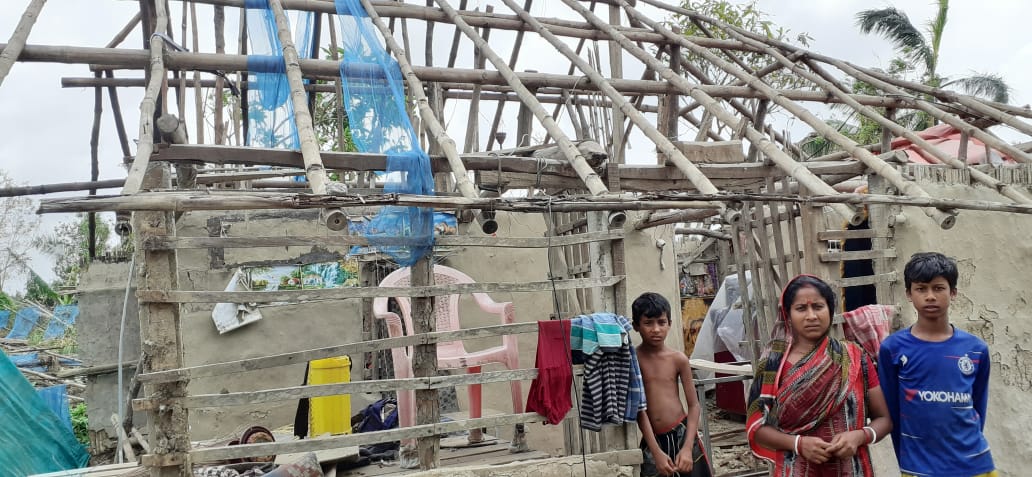
According to Das, Amphan was a much worse storm than Aila. “When Aila struck in May 2009, strong winds came from only one direction for three to four hours. But, during Amphan, we had very strong winds from one direction for four to five hours. Then a pause for about half an hour. Then again strong winds for the next four hours from the other direction. Sab udda ke le gaya [everything was blown away],” he said.
The government has provided some relief to the affected people in Sagar Island. For instance, to repair the houses, Rs 20,000 each has been transferred into people’s bank accounts. Farmers who lost betel vine cultivation have been given a blanket sum of Rs 5,000 each. “But, to rebuild the flattened houses, Rs 1.35 lakh per family under the Pradhan Mantri Away Yojana is not sufficient. We live in a disaster prone area and our houses should be build accordingly [disaster resilient],” said Das. A number of houses in Sagar Island have asbestos or tin-shed roofs, which blow away during high speed winds.
“People in the Sundarbans have been facing storms for a very long time. Shelter in such areas needs to be built keeping in mind the local conditions and has to be resilient to such disasters,” said Rahman. “We work with the local communities and build on their traditional knowledge to construct transitional shelters. We have built such shelters in Cyclone Fani affected Puri district. And will soon be doing so in the Sundarbans, too,” he added.
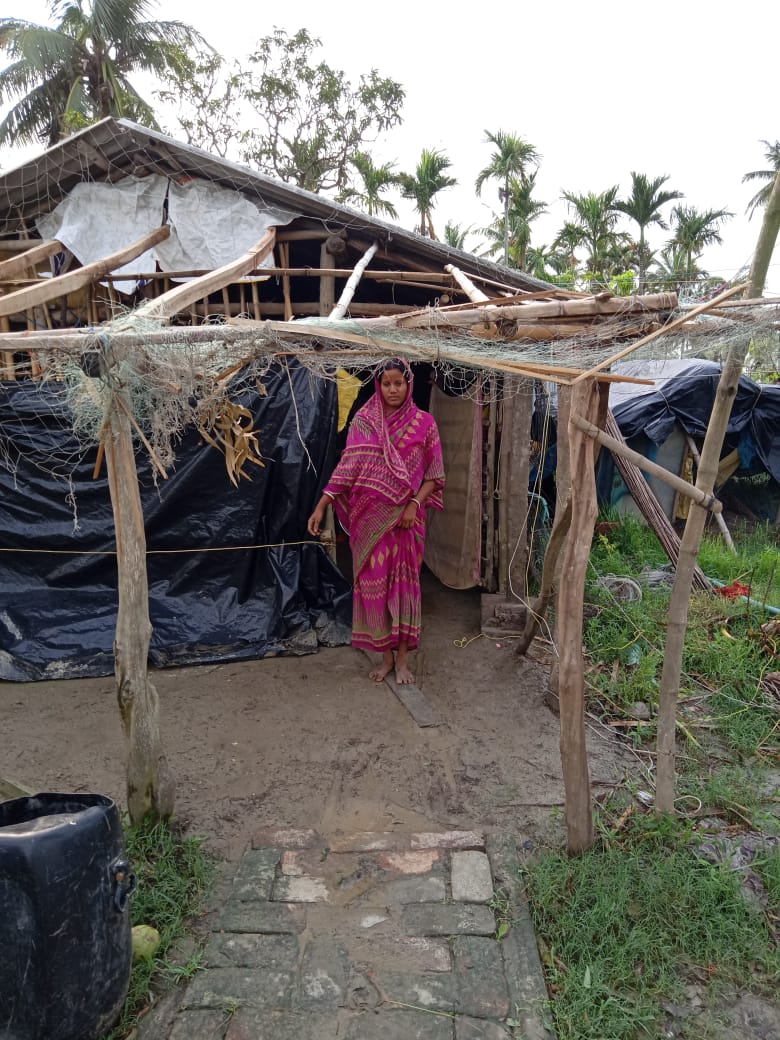
Villagers are demanding the government pays some attention towards the damaged fishing ponds, which were a source of income and nutrition to the local people, and are right now filled with uprooted trees and other debris.
With all their sources of livelihood gone (fishing ponds, agriculture land), local villagers are unsure of how to sustain themselves in the coming few months. Because of the lockdown, a number of men who had migrated for work have returned home and have no work and no income. MGNREGA (Mahatma Gandhi National Rural Employment Guarantee Act) works are expected to start soon, but that may not be sufficient, said Das.
Meanwhile, the India Meteorological Department (IMD) has recently released its detailed report on the Super Cyclone Amphan. It shows the rapid intensification the cyclone underwent. By May 16 evening, it had turned into a cyclonic storm and by the next morning it was a severe cyclonic storm.
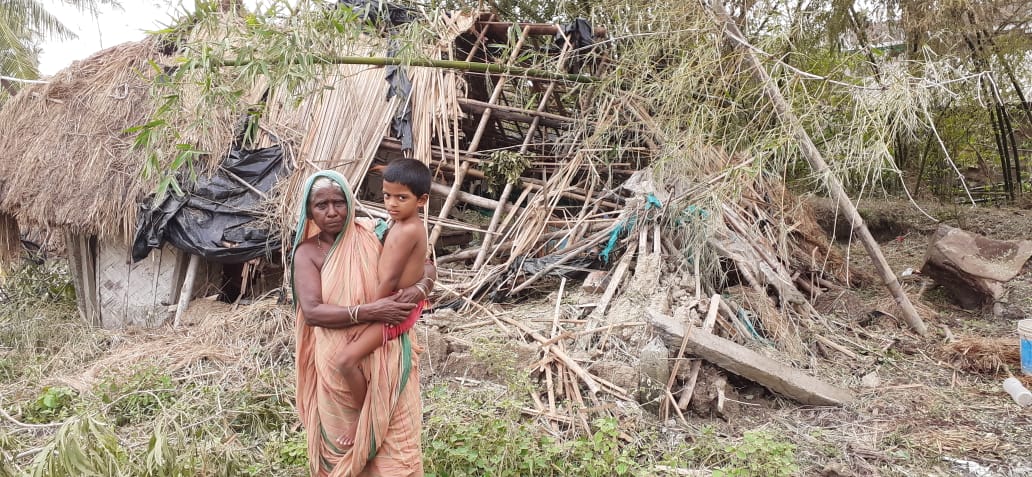
“It underwent rapid intensification during subsequent 24 hours and accordingly intensified into a Very Severe Cyclonic Storm (VSCS) by the afternoon of 17th, Extremely Severe Cyclonic Storm (ESCS) in the early hours of 18th and into a SuCS [Super Cyclone] around noon of 18th May, 2020. It maintained the intensity of SuCS over westcentral BoB for nearly 24 hours…,” reads the IMD report.
To its credit, the IMD accurately predicted the landfall point and time, track and intensity of Cyclone Amphan. But still, at least 85 people died in West Bengal. Scientists have been warning how warming of the oceans is leading to rapid intensification of tropical storms.

